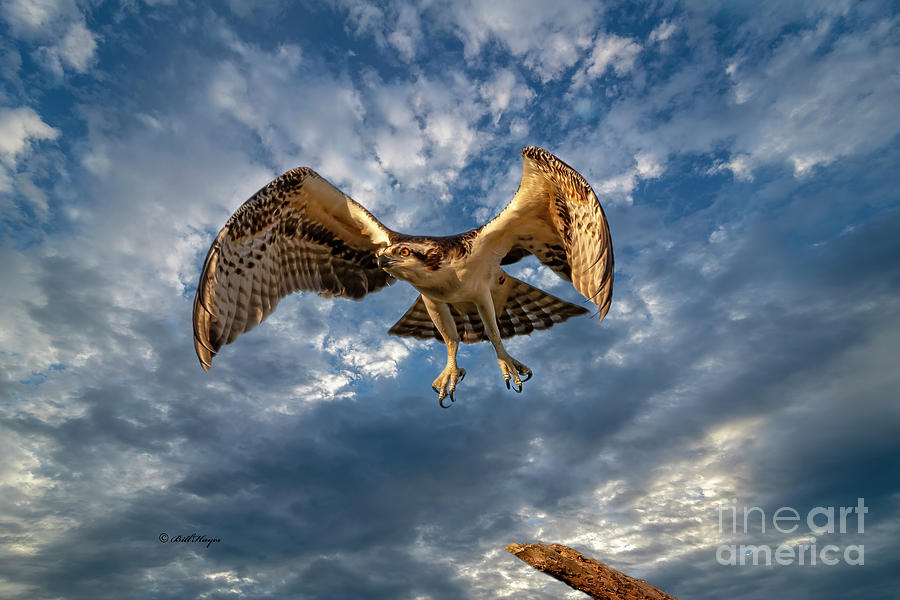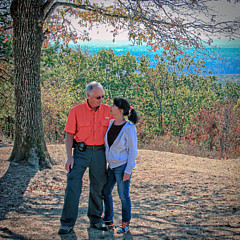
Time To Fly TWO

by DB Hayes
Title
Time To Fly TWO
Artist
DB Hayes
Medium
Photograph - Photography, Photo-painting, Photo-art,
Description
Fine Art Americas (FAA) watermark does NOT appear on sold art as FAA removes the watermark before each copy is museum quality printed on canvas, photo-paper, metal, acrylic or any of FAA’s many other available medias regardless of which one is chosen by the buyer.
COPYRIGHT DISCLOSURE NOTICE: THIS IS A COPYRIGHTED, ALL RIGHTS RESERVED PROTECTED IMAGE. IT IS ALSO MONITORED FOR ILLEGAL PIRACY DOWNLOADS BY PIXSY.
Today (Nov., 08, 2018) I decided to post another version of "Time To Fly", which I titled "Time To Fly TWO" since the only difference between the two is the sky.
I found the sky in the original image boring for my taste or not "pleasing enough to my eyes" so I decided to give a copy of the original an artistic boost. Some time ago I started photographing only sky images (in other words nothing but the sky, which by itself makes for a less than desirable image) when I saw interesting cloud formations, thunderclouds, sunsets or sunrises for this very purpose. When Deb or I capture a nice image such as this (at least I hope most will agree the osprey is a nice capture) but the background, especially a sky image is boring I can exchange it so to speak with one I choose from our collection. It takes tremendous patience and time to do this but if done correctly it is well worth the effort in my opinion.
Both images were captured with a Nikon D850 camera. However, when I captured the sky image I used a Sigma wide angle "art" lens whereas when I captured the osprey in flight I had a Nikon 200-500MM lens attached to the D850 (the lens was extended out to the full 500MM when I made the shot).
Something I have learned is that some folks prefer photographic images in their natural state while others do not mind a little help to improve them. I happen to fall into the second group. The sky in "Time To Fly TWO" makes the image far more interesting for my money. But that is me. You are you. Which is why I posted both images. Now for a little info about this species.
The osprey (Pandion haliaetus) — also called fish eagle, sea hawk, river hawk, and fish hawk — is a diurnal, fish-eating bird of prey with a cosmopolitan range. It is a medium raptor, reaching more than 60 cm (24 in) in length and 180 cm (71 in) across the wings.
Unable to dive to more than about three feet below the water's surface, Ospreys gravitate toward shallow fishing grounds, frequenting deep water only where fish school near the surface. Ospreys nest in a wide variety of locations, from Alaska to New England, Montana to Mexico, Carolina to California; their habitat includes almost any expanse of shallow, fish-filled water, including rivers, lakes, reservoirs, lagoons, swamps, and marshes. Whatever the location, Osprey nesting habitat must include an adequate supply of accessible fish within a maximum of about 12 miles of the nest; open, usually elevated nest sites free from predatory mammals such as raccoons, and a long enough ice-free season to allow the young to fledge.
The Osprey is the only hawk on the continent that eats almost exclusively live fish. In North America, more than 80 species of live fresh- and saltwater fish account for 99 percent of the Osprey’s diet. Captured fish usually measure about 6–13 inches in length and weigh one-third to two-thirds of a pound. The largest catch on record weighed about 2.5 pounds. On very rare occasions, Ospreys have been observed feeding on fish carcasses or on birds, snakes, voles, squirrels, muskrats, and salamanders. Ospreys probably get most of the water they need from the flesh of their prey, although there are reports of adults drinking on hot days.
All visits to our FAA-Pixels art sites are welcomed, encouraged and appreciated. Please visit often.
"Art Enhance Life"
Bill and Deb Hayes
Uploaded
November 8th, 2018
Statistics
Viewed 952 Times - Last Visitor from Cambridge, MA on 04/23/2024 at 7:03 PM
Embed
Share
Sales Sheet























































